
PROFIMEDIA / Profimedia
The NATO Strategic Communications Center of Excellence (NATO StratCom COE), based in Latvia, in its latest report entitled “Virtual Manipulation Report 2025: A New Phase of Digital Information Warfare,” the NATO Strategic Communications Center of Excellence (NATO StratCom COE), based in Latvia, highlights, among other things, a new phase of digital information warfare in which artificial intelligence (AI) plays a key role.
They emphasize that AI is no longer just a new technology but has become a powerful tool for analyzing, creating, and disseminating content on networks.
Advanced AI models enable a better understanding of and fight against manipulation, while adversaries use AI to create false content and code sophisticated attacks.
AI assistants such as Grok on Platform X have been introduced to facilitate interaction and fact-checking, but these systems are still susceptible to errors and biases, as noted.
Artificial intelligence is also being used to create religious and other content, raising questions about authenticity and influence on public opinion. All these changes point to the need for constant monitoring and improvement of AI tools to combat malicious manipulation.
Key findings
The report analyzes the changing landscape of digital influence operations targeting NATO, Ukraine, the European Union, and the United States.
The report also presents a complete overhaul of the data collection and processing system – expanding from just two social media platforms to ten.
Estimates show that approximately 7.9 percent of all monitored interactions show statistical signs of coordination. Messages aligned with Kremlin narratives appeared approximately twice as often as pro-Western ones, and even three times as often when it came to posts that appeared on more than one platform. All of this points to a broader reach and stronger synchronization of operations orchestrated by the Kremlin.
The report notes that the number of posts and comments on social platforms is not a sufficient indicator of influence. Although X had the highest number of posts, YouTube and Telegram showed significantly higher levels of engagement and reach, which, as pointed out, shows that the platform with the most content is not necessarily the most influential.
The adaptability of Russian actors
One key finding is the adaptability and opportunism of Russian actors, who are increasingly actively using changes in the policies of the new US administration as a means to increase their targeting of Ukraine, the EU, and NATO.
In addition to Russian activities, China’s strategic narratives, particularly against NATO, were also identified and analyzed, broadening the focus beyond a single actor. Chinese messages emphasize their own power and attempt to portray the United States as weak, corrupt, and aggressive, while Russian messages are more emotional and often defamatory.
Artificial intelligence (AI) is becoming increasingly prevalent in the digital space. Today, AI can generate content in multiple languages, create influencers from static images, and so on. This capability allows for the rapid exploitation of political events and crises by creating misleading video, audio, and text content.
It is estimated that approximately 15 percent of the current software code for data collection and analysis is generated by AI. This percentage is expected to increase significantly as AI accelerates the development of tools and services—heralding a new era in which not only the dissemination of information but also the development of software and the provision of services are accelerated.
Sources and distribution of content
The study analyzed approximately 11 million posts and comments on social networks.
Platform X is the largest source (almost half of all data), followed by Telegram (about a quarter) and YouTube (about 12 percent, mostly longer videos focused on narrative building).
The Russian platforms VKontakte and OK account for 7 percent, with audiences in Russia and the Russian diaspora. The remaining 5 percent comes from Facebook, Instagram, TikTok, Bluesky, Threads, and similar services.
English dominates on X, Bluesky, and partly on YouTube, while Russian dominates on Telegram, VK, and OK. Other platforms show a mix of European and Asian languages.
There are two main routes for content distribution: X is used for broad reach (with platform limitations), while Telegram and Russian platforms target a loyal and harder-to-reach core audience.
Platform X leads in discussions on broader geopolitical issues, while Telegram and the Russian platforms VK and OK are used for specific regional content and topics related to military exercises.
Although X, Telegram, and YouTube have the highest number of posts, YouTube, Telegram, and TikTok have the highest levels of engagement and reach.
Due to the high level of user engagement on some platforms, experts should pay particular attention to the comments sections to gain deeper insight and detect possible rule violations and the presence of hate speech.
Hostile narratives about NATO
The researchers first analyzed Kremlin-related posts by type of post (original post, shared content, amplified shared content, comments, and replies to comments).
The Kremlin-related information space relies heavily on amplification. The vast majority of highly coordinated content (58.9 percent, or a total of 74,772) consists of simple shared posts (reposts), with an additional 3 percent (3,798) representing amplified reposts.
Platform X is the main channel for this type of content, accounting for 87.8 percent of all reposts and 74 percent of extended reposts, while Telegram accounts for most of the remaining activity.
Original content is significantly less common, accounting for only 18.7 percent (23,735 posts), and is mostly found on Russian domestic platforms such as VK (42.9 percent), OK (14.6 percent), and Telegram (32.7 percent).
Comments are also an important part of the activity – Telegram dominates both in terms of the number of comments (41.7 percent) and the number of replies to comments (66 percent), followed by YouTube with 32.8 percent and 12.2 percent in these categories, respectively.
Between May 2024 and April 2025, the total number of posts increased significantly in response to major geopolitical events, with activity in English and Russian rising and falling in almost parallel waves.
The debates glorify Russia as the defender of traditional values and sovereignty, while the US is portrayed as corrupt, degenerate, and controlled by globalist interests. The West is accused of the conflict in Ukraine, electoral fraud, and advocating war. Ukrainian drone attacks are presented as provocations.
The West, NATO, and Ukraine are portrayed as renegade aggressors whose eastward expansion, “globalist” conspiracies, and even staged pandemics are said to be used to strategically defeat Russia by fomenting internal unrest and future F-16 attacks on Crimea.
Western leaders are ridiculed as Russophobic puppets, Ukraine is labeled a fascist proxy, and NATO is portrayed as an anti-Russian tool. However, the authors argue that Russia will crush any attack once it has resolved its internal problems. The rhetoric is equally alarmist, conspiratorial, and strongly nationalistic, portraying Moscow as the last bastion of civilization against an existential attack by the West.
Discussions about Western weakness, deception, and declining will to fight in Ukraine portray NATO as an aggressive and Russophobic organization. Ukrainian President Volodymyr Zelensky is portrayed as selfish and desperate, more concerned with personal power than peace. The West is accused of provoking new fronts (e.g., Moldova, the Baltics), while Russia is criticized for being too passive. Other posts celebrate Russian military successes and mock the Ukrainian leadership, accusing the West of exploiting Ukrainian lives for its own interests. The tone is hostile, alarmist, and triumphant, encouraging a stronger Russian response and portraying NATO as a global aggressor.
The October 2024 posts strongly promote a pro-Russian, anti-Ukrainian, and anti-Western narrative, portraying Ukraine and Zelensky as corrupt, illegitimate, and militarily weak.
The conflict is interpreted as a justified Russian response to NATO aggression, the 2014 coup, and the persecution of ethnic Russians. Zelensky is ridiculed for his diplomatic failures, while NATO is portrayed as manipulative, indecisive, and ultimately doomed to failure. The tone is mocking, triumphant, and conspiratorial, emphasizing Russian military power, the collapse of Ukraine, and the moral and strategic failure of the West. The November 2024 posts strongly promote a pro-Russian and anti-Western narrative, portraying Ukraine as a corrupt, weak puppet state manipulated by NATO and the United States.
Russia is portrayed as defending against Western aggression, with recent missile strikes (such as “Orešnik”) highlighted as proof of Russian superiority and Western vulnerability.
NATO is accused of planning to divide Ukraine and escalate the conflict under false pretenses.
January’s posts take a strongly aggressive, pro-Russian stance and portray NATO as a hostile, corrupt force led by morally bankrupt elites. Ukraine is blamed for the war and accused of crimes, while Russia is praised for its military power, and its escalation of the conflict, including nuclear threats, is justified. The tone is openly hostile, conspiratorial, and contemptuous, advocating tougher Russian action and the complete defeat of Ukraine.
Posts on social media from early February 2025 portray the war in Ukraine as a “proxy war” between the US/West and Russia, driven by “globalist” and “neoconservative” agendas and NATO expansion. The main arguments are that Western measures (sanctions, support for Ukraine) have “backfired and led to Russia’s victory and the West’s downfall.” Ukraine’s membership in NATO is a dangerous provocation toward World War III, Zelensky is a “psychopath,” “drug addict,” or “puppet”; Western leaders such as British Prime Minister Keir Starmer and NATO Secretary General Mark Rutte are incompetent “globalists” who are promoting war.
US President Donald Trump is a positive force working with Putin to end the conflict. The tone is extremely aggressive, conspiratorial, and triumphant about perceived Western failures, using inflammatory language against opponents while praising Trump and predicting Russia’s success.
Themes in the period since late February 2025 evolve from glorifying Russia as a moral stronghold and portraying Ukraine as a failed Western puppet to portraying NATO and the EU as globalist tools orchestrating war, social breakdown, and digital repression.
The messages reflect hostility toward Western leaders, triumph over Russia’s power, and calls to resist the alleged elitist global agenda.
A total of 1,924 pro-Kremlin messages were identified over the entire period, compared to 902 pro-Western messages. Of these, 1,128 pro-Kremlin messages were cross-platform, while only 350 pro-Western messages were cross-platform.
Pro-Russian messages often criticize NATO’s role in escalating the war in Ukraine, portraying it as a dangerous and unnecessary conflict. The narratives emphasize the devastating consequences of Western support for Ukraine and claim that Russian resistance is a stance against a globalist agenda that undermines traditional values. Some messages also suggest that the war benefits global elites, while ordinary people suffer.
Anti-Russian messages strongly advocate Ukraine’s inclusion in NATO and portray the alliance as a necessary protection against Russian aggression. Many of these messages also emphasize that the West, led by NATO, must support Ukraine’s freedom, with prominent leaders defending NATO’s strategic importance in countering Russian expansionism.
The dominant narrative after the US elections was praise for a possible partnership between Trump and Putin, criticism of the policies of the “deep state” and NATO, and claims that Western support and sanctions would only exacerbate the conflict.
Throughout the post-election period, China was consistently portrayed as a rising power and America as a declining one, with related narratives reinforcing the theme of a strong Russia and China versus a divided West, suggesting that only an agreement led by Trump could prevent disaster.
A total of 273,000 posts and comments on the topic of “NATO and the Baltics” were found on Telegram (54 percent), followed by YouTube (17 percent), OK (12 percent), VK (9 percent), and X (6 percent).
The remaining 2 percent came from five other platforms. The anniversary of Russia’s invasion of Ukraine at the end of February 2025 saw the highest weekly number of posts (105,000), with pro-Kremlin sources questioning NATO’s commitment to defending the Baltics.
The asymmetric power of Platform X
Over the past year, Elon Musk has frequently used his Platform X account to express views consistent with those of the US administration on Ukraine. When Grok, Platform X’s large language model, summarized the responses to Musk’s statements, it turned out that most online discussions were critical of his views.
Before the US elections in November 2024, Elon Musk was frequently mentioned in discussions about influence operations, appearing in approximately 9,600 posts with an estimated 240 million potential views. The narratives portrayed him as someone who promoted pro-Trump, anti-Biden, anti-NATO, and skeptical views on Ukraine, and advocated for a reduction in Western military aid. He was also portrayed as a potential policy maker interested in joining a future Trump administration, critical of “globalist” EU leaders and free speech regulations, in dispute with Brussels over content moderation, and a key decision-maker on Starlink, which could influence Ukrainian attacks and escalate the conflict.
Opportunities and risks of the X platform
In April 2025, X revised its authenticity policy, which now requires all accounts dealing with parody, commentary, or fan content (PCF accounts) to clearly identify themselves with labels such as “fake” or “parody” in their usernames. These accounts are also prohibited from using the same profile pictures as the people they may be impersonating.
Since blue certificates can now be purchased, they are no longer a credible verification tool, which is probably one of the main reasons for the change in policy.
Although the new label is intended to reduce confusion and limit the ability of malicious actors to falsely present themselves as trustworthy media outlets, it is self-assigned by users. Ultimately, everything depends on how effectively X enforces its authenticity policy.
The Chinese government’s narrative
NATO’s partnerships with countries in the Indo-Pacific region have been developing for a long time. Cooperation has been strengthened through various forms and agreements, such as the participation of Indo-Pacific countries in NATO summits and other high-level meetings, including the first meeting of NATO defense ministers in 2024, as well as through the ITPP (Individually Tailored Partnership Program).
At the same time, the Chinese government has occasionally expressed critical views on NATO’s involvement in the Indo-Pacific region (Asia-Pacific region), arguing that these NATO activities are based on a “Cold War mentality” and will disrupt regional dynamics. The Chinese government regularly presents such narratives at press conferences held by the Ministry of Foreign Affairs. It is possible that the Chinese government wants to spread these messages about NATO in order to create negative sentiment towards its presence in the Indo-Pacific region.
If such negative sentiment were to spread globally, it could jeopardize cooperation between NATO and its partners in the Indo-Pacific region. It is therefore important to monitor how Chinese narratives are perceived in the information environment.
The report analyzed social media posts related to NATO and the Indo-Pacific region that contained one or more of 22 key phrases used by the Chinese Ministry of Foreign Affairs to criticize NATO’s commitment to the Indo-Pacific region. A total of 15,577 posts were collected.
After a more detailed analysis of the content, approximately one-third of the originally collected posts were reviewed from platforms such as YouTube, X, Telegram, Facebook, TikTok, VK, BlueSky, and Instagram.
YouTube stood out as the fastest-growing channel: from 726 relevant posts and comments on the topic on May 27, 2024, to 12,117 posts on February 24, 2025—a roughly 16-fold increase, peaking around the second anniversary of the war.
The study shows that, despite many similarities, China’s strategic communication approach differs from Russia’s in some respects. Official Chinese communication appears strategic, calm, and patient, emphasizing the weaknesses of the US in terms of power. In contrast, Russian hostile communication is typically more emotional.
The transformation of virtual space through artificial intelligence is the subject of constant monitoring, particularly from the perspective of both “blue” (defensive) and “red” (hostile) teams. It is clear that artificial intelligence is no longer just a new technology, but an important force with a serious impact on both sides of the information landscape.
In defense efforts, the most significant progress has been made in multimodal content analysis, which significantly improves our ability to understand and counter complex malicious manipulation campaigns. At the same time, the coding capabilities of artificial intelligence present both opportunities and challenges.
Equipped to develop advanced artificial intelligence analysis tools, NATO’s Strategic Communications Centre is exploring the potential of sophisticated coding assistants. In this edition of the Virtual Manipulation Report (VMB), approximately 15 percent of the code was generated by artificial intelligence, and this percentage is expected to increase in future editions as we integrate more advanced models. What has changed with the new generation of more powerful multimodal and long-term artificial intelligence models?
In March 2025, X introduced the ability to communicate directly with Grok in replies. Perplexity had already built a similar bot for X, while FactSparrow introduced real-time fact-checking within X threads in 2021.
Interactions with these bots are not limited to fact-checking; users also employ them for discussions, image creation, and similar purposes.
However, these bots are subject to the common shortcomings of artificial intelligence—inconsistent reasoning and occasional biased or inappropriate responses. Despite these shortcomings, X is on the verge of replacing its traditional content recommendation system with one powered by Grok, but the impact of this change remains to be seen.
Deliberate manipulation of these systems can have serious consequences, as demonstrated by Grok’s recent generation of opinion content on “white genocide in South Africa.” This incident highlights the critical importance and inherent challenges of ensuring the neutrality, transparency, and credibility of such advanced AI systems that will be used and seen by the wider population. In addition, President Emmanuel Macron and his wife have been the target of deepfake campaigns on multiple occasions as France takes on a greater role in EU security. For example, the campaign specifically targeted EU leaders, including President Macron.
Interestingly, the AI system rejected all of these claims when genuine users asked Grok about them in conversation, as if they were not credible.
On May 7, 2025, several videos appeared on TikTok, X, Telegram, VK, OK, and several Russian entertainment platforms, claiming that the Immortal Regiment (a Russian patriotic initiative in which participants march with portraits of relatives who fought in World War II) had returned to Berlin despite all restrictions. The videos had captions such as “80 years later, they returned to Berlin.”
At least five different videos were identified showing billboards in various locations in Berlin with portraits of Soviet soldiers, reinforcing the credibility of these narratives.
Conclusions
Artificial intelligence is becoming a key factor in information warfare in 2025, with significant advances in automation and data analysis. Pro-Russian and pro-Chinese manipulators are increasingly collaborating and using AI-generated content, such as deepfake videos, to simultaneously spread disinformation across multiple social networks. In the future, these hostile actors are expected to use advanced AI protocols to coordinate and rapidly spread manipulation.
Russian narratives seek to discredit NATO and the West, while China attempts to challenge NATO’s role in the Indo-Pacific with “Cold War” rhetoric. The emergence of sophisticated artificial intelligence tools and deepfake technologies further complicates the verification of content authenticity, necessitating improved protection and detection mechanisms to defend against these threats./The Geopost/

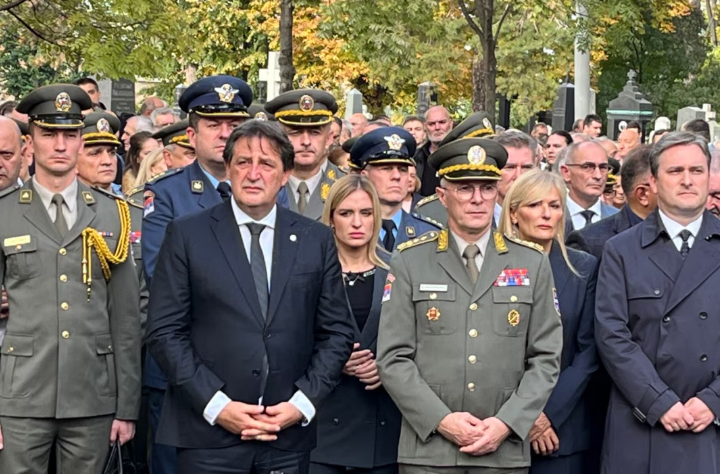 State Honours in Belgrade for a War Criminal
State Honours in Belgrade for a War Criminal 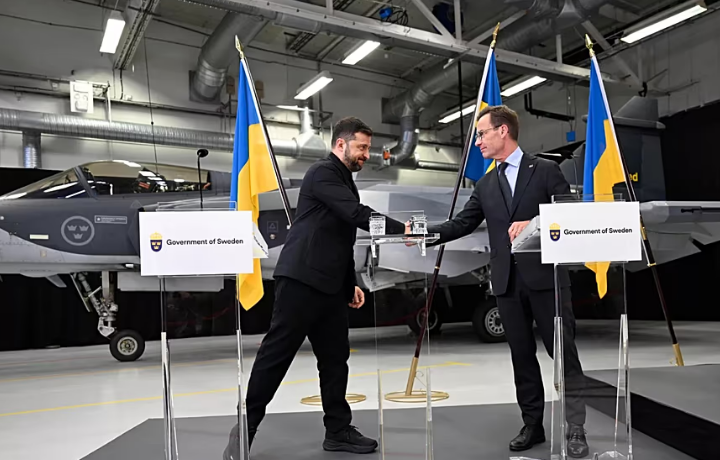 Ukraine and Sweden sign a long-term deal for up to 150 Gripen fighter jets for Kyiv
Ukraine and Sweden sign a long-term deal for up to 150 Gripen fighter jets for Kyiv 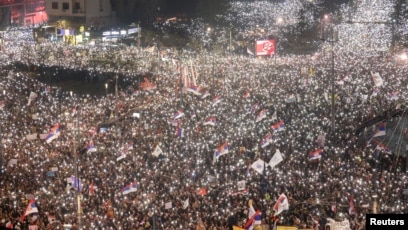 European Parliament draft resolution on Serbia supports citizens’ right to protest
European Parliament draft resolution on Serbia supports citizens’ right to protest  Poland detains eight over suspected Russia-linked sabotage, says PM Tusk
Poland detains eight over suspected Russia-linked sabotage, says PM Tusk 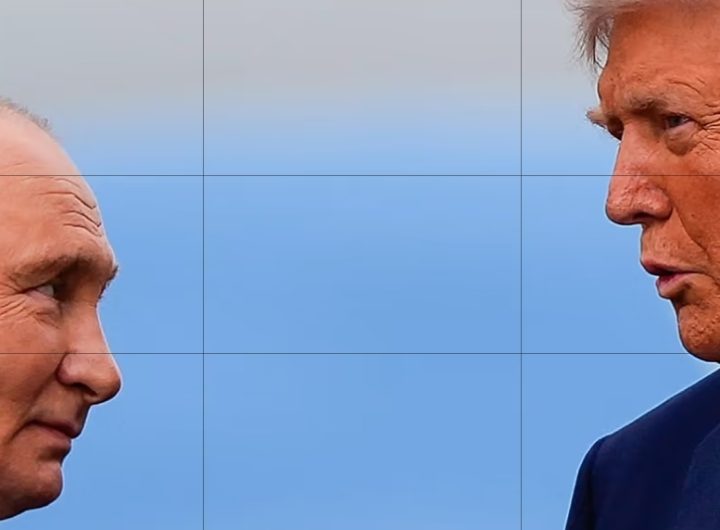 No Trump-Putin meeting in foreseeable future — this is why
No Trump-Putin meeting in foreseeable future — this is why 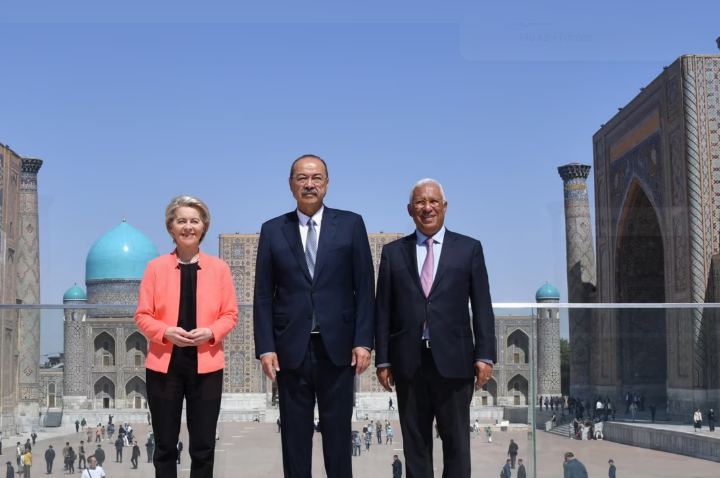 EU Readies New Trade Routes — And A Challenge To Beijing And Moscow — At Luxembourg Summit
EU Readies New Trade Routes — And A Challenge To Beijing And Moscow — At Luxembourg Summit